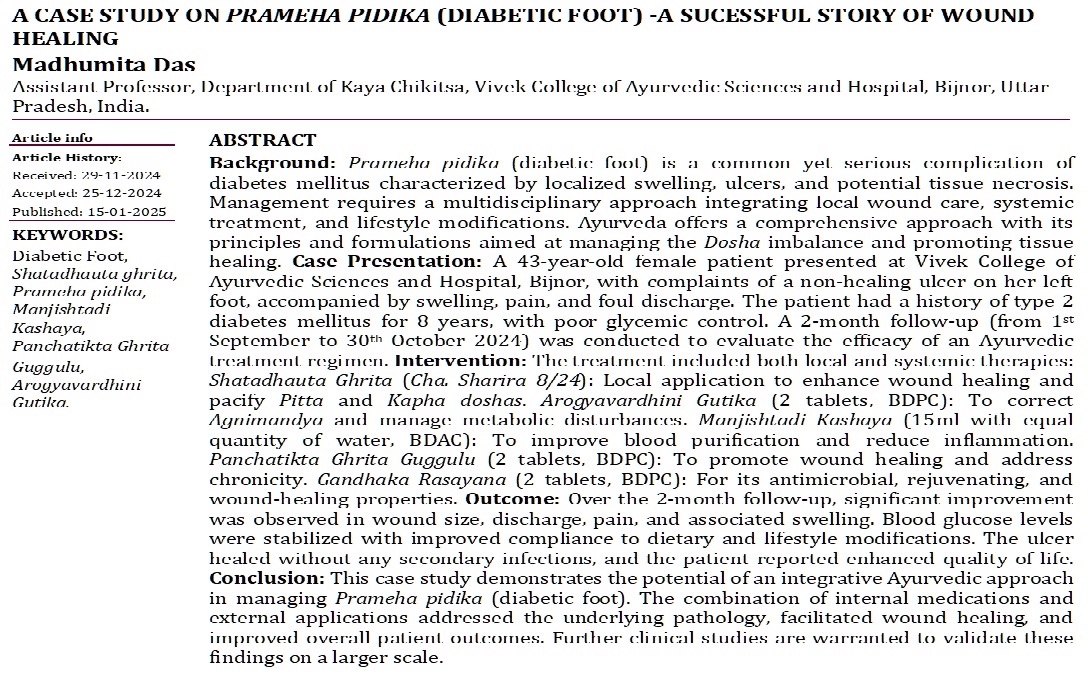A Case Study on Prameha Pidkia (Diabetic Foot) - A Sucessful Story of Wound Healing
DOI:
https://doi.org/10.47070/ayushdhara.v11i6.1812Keywords:
Diabetic Foot, Shatadhauta ghrita, Prameha pidika, Manjishtadi Kashaya, Panchatikta Ghrita Guggulu, Arogyavardhini Gutika.Abstract
Background: Prameha pidika (diabetic foot) is a common yet serious complication of diabetes mellitus characterized by localized swelling, ulcers, and potential tissue necrosis. Management requires a multidisciplinary approach integrating local wound care, systemic treatment, and lifestyle modifications. Ayurveda offers a comprehensive approach with its principles and formulations aimed at managing the Dosha imbalance and promoting tissue healing. Case Presentation: A 43-year-old female patient presented at Vivek College of Ayurvedic Sciences and Hospital, Bijnor, with complaints of a non-healing ulcer on her left foot, accompanied by swelling, pain, and foul discharge. The patient had a history of type 2 diabetes mellitus for 8 years, with poor glycemic control. A 2-month follow-up (from 1st September to 30th October 2024) was conducted to evaluate the efficacy of an Ayurvedic treatment regimen. Intervention: The treatment included both local and systemic therapies: Shatadhauta Ghrita (Cha. Sharira 8/24): Local application to enhance wound healing and pacify Pitta and Kapha doshas. Arogyavardhini Gutika (2 tablets, BDPC): To correct Agnimandya and manage metabolic disturbances. Manjishtadi Kashaya (15ml with equal quantity of water, BDAC): To improve blood purification and reduce inflammation. Panchatikta Ghrita Guggulu (2 tablets, BDPC): To promote wound healing and address chronicity. Gandhaka Rasayana (2 tablets, BDPC): For its antimicrobial, rejuvenating, and wound-healing properties. Outcome: Over the 2-month follow-up, significant improvement was observed in wound size, discharge, pain, and associated swelling. Blood glucose levels were stabilized with improved compliance to dietary and lifestyle modifications. The ulcer healed without any secondary infections, and the patient reported enhanced quality of life. Conclusion: This case study demonstrates the potential of an integrative Ayurvedic approach in managing Prameha pidika (diabetic foot). The combination of internal medications and external applications addressed the underlying pathology, facilitated wound healing, and improved overall patient outcomes. Further clinical studies are warranted to validate these findings on a larger scale.
Downloads

Downloads
Published
Issue
Section
License
Copyright (c) 2024 AYUSHDHARA

This work is licensed under a Creative Commons Attribution-NonCommercial-ShareAlike 4.0 International License.


